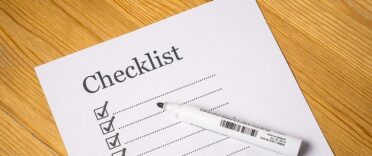 The tax year end, 5th April, will soon be upon us so time is almost up for those tax year sensitive tasks. To help you all I have compiled an ‘End of Tax Year’ checklist as an aide-memoire.
The tax year end, 5th April, will soon be upon us so time is almost up for those tax year sensitive tasks. To help you all I have compiled an ‘End of Tax Year’ checklist as an aide-memoire.
The end of the tax year obviously is of particular significance when managing your finances and investments and offers planning opportunities for each individual. The below checklist is not meant to be exhaustative but rather a memory jog of the key planning areas which might be achievable this late in the day. So pen at the ready…
- Pay into your pension – In short, pensions offer a tax efficient way to invest for your retirement. Not only do the funds within a pension grow tax-free but any contributions you make into the plan receive income tax relief at your highest marginal rate. So in simple terms if a basic rate tax payer pays £80 into his pension the tax-man tops this up to £100. Similarly for a 40% rate tax payer a £100 contribution into his pension fund actually only costs him £60. However, while this seems a great deal, which it is, the trade off is that you won’t be able to access your pension fund until you are 55 and even then only 25% of it can be taken as a tax free lump sum. The rest has to be used to provide you with a retirement income. The tax-year end sensitivity comes from the annual limits placed on the amount you can put into a pension fund. Under current rules the maximum someone can contribute to a personal pension and receive tax relief, is 100% of their earnings or £3,600, whichever is greater. This is capped at the Annual Allowance of £50,000 (even if your earnings are well above this).
- Carry forward pension contributions - under current rules any unused pension contribution Annual Allowance can be carried forward from the previous 3 years. That means people with sufficient earnings could carry forward up to £150,000 of unused allowances from previous tax years. But more importantly if you have an unused allowance relating to 2008 this will be lost if not used by 5th April 2012. Again this is a complicated area of pension legislation so seek professional advice.
- Protect your pension pot - If you have a large pension pot and are likely to breach the new £1.5m Lifetime Allowance (LTA) then you may want to apply to HMRC for what is known as 'fixed protection'. If you don't then an LTA tax (up to 55%) could be applied to benefits over the LTA. Seek advice ASAP as you must apply for fixed protection by 5th April 2012.
- Pay into your spouse’s pension – even non-earners such as housewives can get tax relief on pension contributions. A non-earner can pay £2,880 each tax year into a pension and receive an additional £720 from the tax man (effectively free money!). So bringing their total gross contribution up to £3,600. I cover this topic in more details here.
- Boost your state pension - If you want to top up a National Insurance contributions shortfall, you normally have to do this within six years of the end of the tax year for which the contributions are being paid. You can do this even if you've already reached State Pension age. If you pay more than two years after the end of the relevant tax year, the rate will normally go up. So that means if you want to top up a shortfall in contributions relating to the 2005/06 tax year then this has to be done by 5th April 2012. Full details of time limits, rates and exemptions can be found here on the HMRC website.
- Use you annual ISA allowance - You can shelter up to £10,680 each tax year in a Stock and Shares ISA (also called an investment ISA) or save up to £5,340 in a cash ISA. Any income, interest or a capital gains from an ISA are tax-free! But your ISA allowance is lost if not used before the end of the tax year. In addition, check out my post Money tip #28 – How to beat the ISA deadline and save money (even if you haven’t decided which funds to invest in).
- Utilise your Capital Gains Tax (CGT) allowance – If the value of your investments have increased enough during the current tax year to exceed the capital gains tax allowance of £10,600, you may want to consider selling enough of your units or shares to use that allowance. This will help you reduce any future tax liability. For other ideas on how to cut your CGT bills then read my post How to realise capital gains without paying tax.
- Reduce you Inheritance Tax (IHT) bill – there are a number of annual IHT allowances which are tax year sensitive. By using them you can reduce any potential IHT bill payable on your death. Each tax year you can:
-
- give away £3,000 of your capital, and if you don’t make use of your exemption in one year you can carry it forward to the next year, for one year only.
- make gifts of up to £250 a person (although this cannot be used in conjunction with any other inheritance tax allowance).
- give away £5,000 to a child who is getting married.
- For other ways that to reduce your tax bill see my 15 ways to cut your Inheritance tax bill.
As always you should seek financial advice if you are unsure as to the suitability of an investment or a course of action. And to make sure your friends and family don't get caught napping at the end of the tax year why not share this article with them using the various methods below.




